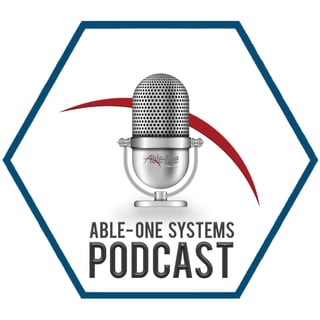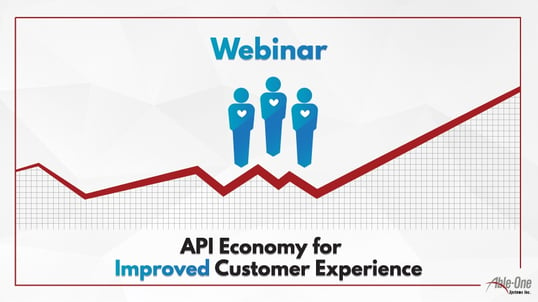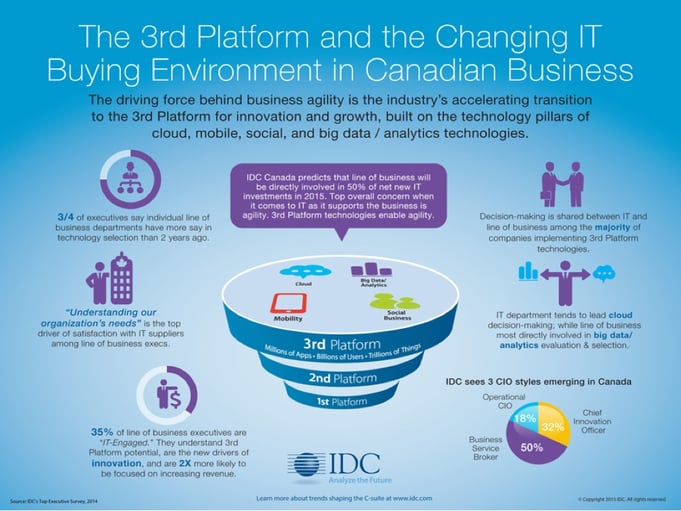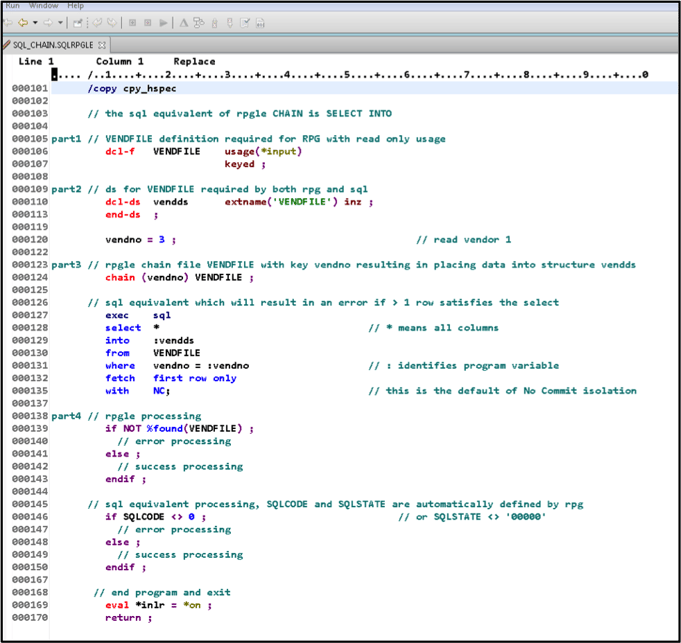By Eden Watt, Vice President, Application Innovation, Able-One Systems & Amy Anderson, DIrector of Business Development, Zend
In a previous blog - http://info.ableone.com/blog/php-in-the-enterprise-an-introduction - we reviewed the myriad of reasons to use the PHP scripting language for your web and mobile applications. In addition, we briefly reviewed how Zend makes this Open Source language a robust platform for enterprise application development. But did you also know that Zend Server provides a native PHP solution for IBM i and that thousands of organizations are running PHP apps on IBM Power platforms?
Today, we share the Top Ten Reasons for using PHP from Zend Technologies to modernize your IBM i applications.
NUMBER 10:
The IBM i integrated operating system lets you focus on your application instead of the underlying technology and, unlike other platforms, you don’t have to worry about the stack underneath it.
You’ve heard of LAMP (Linux, Apache, MariaDB or MySQL, PHP) and other stacks that come into play for deploying PHP but if you’re on IBM I, your database and application server should be all set. Maybe we can call it iP or iAP..
The original architecture of AS/400 included integration of relational database, security, networking and storage management with use of single-level storage to remove the necessity of customers managing storage. Combine this with an object-based operating system to ensure integrity and reliability, the technology independent machine interface (“TIMI”) which allowed compiled programs to move from one release and one processor family to another without recompilation and expectations that multiple workloads can be run on the machine with load-balancing capabilities and you have a platform built to handle the most complex business applications.
Compared to IBM i, most open source stacks require a “Do It Yourself” approach that is prone to configuration errors and component mis-matches. This forces the developer, who wants to focus on building great applications, to deal with operating system settings and load balancers. On IBM i, these things are handled, giving the developer more time for innovation.
NUMBER 9:
PHP Runs Best on POWER8
As is well documented, the POWER8 processor is significantly faster than POWER7, and improves user throughput. Among its many advantages, POWER8 handles dynamic languages, including PHP, more efficiently than POWER7. So without any modification to the app and without changing and settings on the processor, POWER8 will just be faster.
At the same time, the open source PHP community has released PHP7, which provides a 2x performance improvement over its predecessor, PHP 5.6. So between a faster processor and a faster PHP kernel, IBM i customers will find that tremendous performance gains when they run PHP7 on POWER8.
NUMBER 8:
"Cadillac support" at open source prices
IBM i service and support has long been the envy of the tech industry. IBM i support has consistently ranked in the top 5 for customer satisfaction. Many customers would even agree that they have been somewhat spoiled by IBM’s long term support for the software and operating system.
Zend has followed IBM’s lead in providing extended support for older versions of PHP that the open source community has dropped. For example, both PHP 5.3 and 5.4 are no longer supported by the community, but Zend has a multi-year commitment to supporting those versions.
When running business-critical applications, slow and incompetent support is not an option, no matter how it’s priced. Both IBM and Zend deliver fast response times and expert level support so that businesses can operate smoothly and confidently.
NUMBER 7:
Your web & mobile apps will be easier to manage and fast to deploy
Zend Server is an enterprise PHP application server powering deployment for web and mobile development. In PHP, deploying an application is the process of copying, configuring and enabling a specific application to a specific base URL on Zend Server or on a cluster. Once the deployment process has finished, the application becomes publicly accessible on the base URL. Zend Server automates the deployment process, providing productivity gains as well as minimizing human error in the deployment process.
But the biggest productivity gains come from using Z-Ray, which gives developers real-time, non-intrusive insight into their website and mobile applications, improving performance and speeding time-to-delivery. Z-Ray is available in Developer, Professional, and Enterprise Editions.
NUMBER 6:
Leverage your IT assets and deliver leading edge solutions
The prevailing assumption at most businesses is that analytics, content management, and mobile apps must all be built on the x86 platform. If you run your core business applications on IBM i, that assumption forces you into an expensive and labor intensive exercise of building and maintaining an extract and transfer process to move data from IBM i to your new applications.
But the x86 platform is not a requirement for your new applications. Zend Server runs natively on IBM I, and it is the very same code base that runs on x86 platforms. By building your web & mobile applications on IBM i, you can avoid the hassles and expense of maintaining a data transfer process.
Zend lets you better leverage the resources you've already bought and enable new technologies with minimal disruption to the business.
NUMBER 5:
Easier Systems Management
As every IBM i customer knows, the integration of the hardware, operating system, database, and storage drastically simplifies systems management. Your PHP applications can enjoy the same level of integration and simplicity when you deploy them on IBM i. Just as IBM i manages the system components on behalf of your core business applications, so will it manage the same for your web & mobile applications when you build them with PHP on IBM i.
NUMBER 4:
Procedural or OO Development – It’s your Choice
Many of the development languages currently in use for web & mobile applications require an object oriented development approach. While this is a proven technique for app development, it can be a daunting step for IBM i shops, where the development team is steeped in procedural programming .
PHP helps you bridge that gap. With Zend Server on IBM i, you can start with a procedural approach that will be comfortable and familiar to your RPG and COBOL developers. As your organization grows in its familiarity with PHP, you can start using some of the objects in the Zend Framework. And if you have developers who are eager to go all in on object-oriented, they can easily go there with Zend Server.
No one is forcing you into a new development paradigm, but it's there if you want to go there. ie, procedural to OO programming; go when you want, if ever.
Take advantage of a programming language with millions of developers worldwide, used by some of the most popular online content management systems
Use Zend Studio PHP IDE, which allows developers to edit code and with debug and build automation tools.
NUMBER 3:
Easy to secure, less vulnerable to hacks
People in the x86/open source world don't know what they’re missing but those of us that have managed this platform for years, know that this true..
IBM i security plus Zend Guard to protect PHP applications with encoding and obfuscation, prevent reverse engineering and to secure website intellectual property.
NUMBER 2:
Lowest Total Cost of Ownership in the industry
You’ve heard it before. Managing enterprise applications on IBM i has been reported as the most economical platform. The vast majority of IBM I shops believe the platform delivers better ROI than other servers.
So now you can take advantage of this for your web and mobile interfaces too with PHP Zend for i.
NUMBER 1:
Native Integration to extend your legacy applications
Zend has an open source PHP toolkit for the IBM i that enables native integration with all IBM i objects – RPG, ILE, CL, C, data areas, DB2/400…



 (http://www.ableone.com/digital-transformation-adopting-processes-and-leveraging-technology-to-succeed-in-the-future/)
(http://www.ableone.com/digital-transformation-adopting-processes-and-leveraging-technology-to-succeed-in-the-future/) 



 By Chuck Luttor, IBM i Software Developer at Able-One Systems inc.
By Chuck Luttor, IBM i Software Developer at Able-One Systems inc.